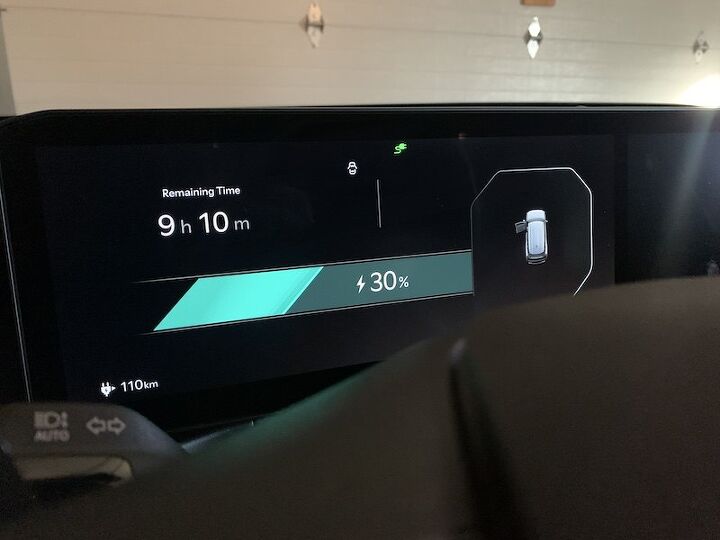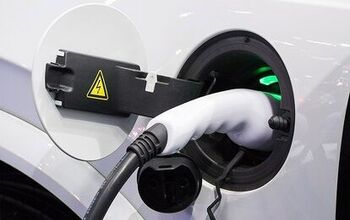Amped Up: Installing an EV Charger at Home

There’s no shortage of debate in this country about electric vehicles – and for good reason. For some, the technology just isn’t quite there yet to fulfil the daily duties they require of their primary vehicle. For others, existing levels of range being offered in the marketplace suits their needs just fine. Other considerations like affordability and performance are as much case-by-case as an individual’s dinner order at a restaurant.
One thing almost everyone can agree on? The appalling state of public charging infrastructure. Faced with broken chargers or a simple lack thereof, your decided to make the leap and install a Level 2 charger in the garage space attached to his home.
It’s a service to you, too, dear reader. Third party studies and anecdotes alike suggest many EV owners carry out up to 80 percent of charging at home, not at the perpetually frustrating public units. With a Level 2 charger at hand, we can better replicate the typical experience of a real-world EV owner and bring you more comprehensive report of whatever electric vehicle is darkening our driveway in a particular week instead of turning the review into a vehicle for kvetching about the state of communal charging stations.
Before diving into the details, we’ll remind anyone who fell asleep in class that the chargers which a provided as standard with most EVs and PHEVs are called Level 1 units and plug into a normal 110V household outlet as if one were plugging in their Samsung television or knackered old Xbox. Level 2 chargers connect to a 220V outlet, like the ones used to power an electric range or clothes dryer. Technically, it’s called a NEMA 14-50 outlet.
This option from a company called Autel was selected based on a $399 price, connectivity features, and – to be blunt – a promise of fast shipping. Called the MaxiCharger AC Lite, it is equipped with the standard J1772 plug which is part and parcel of most EVs today but will soon be making way for the NACS (Tesla) charging plug. I’m not concerned about that development because convenient adapters for making the conversion are small and inexpensive.
Make sure to get a unit which has power cords sufficient for yer needs. This Autel has a 25-foot charging cable while the one that plugs into the wall is nearly 3 feet long. This will help position the charger in a convenient spot – whether that convenience is centred around usage or installation is up to you and your electrician. Speaking of, I paid a certified professional less than $300 to wire up the required outlet and 40A circuit breaker; it probably would have been cheaper if we weren’t fans of rival hockey teams.
Usage was simple as the day is long. After installing a mounting bracket on wall studs and hanging the charger, all that was required for set up was to simply plug the thing into our new 220A outlet. A couple of blinking lights confirmed the charger was working properly, and a couple more indicated power was flowing once connected to the charging port of a Kia EV9. Dashboard readouts on the blue Kia suggested it was hoovering up electrons to the tune of roughly 7.0kW, a figure which jived with information provided through the Autel app.
And, no, Luddites – you don’t have to install the app on a smart device in order to make the charger work. However, this writer enjoys the ability to start and stop charging remotely, to say nothing of the detailed reports of charging sessions he can export to a nerdy Excel spreadsheet. For example, my charging session of February 11th shows the EV9 consumed 84kWh over 12 hours (about 8pm to 8am), working out to approximately $9.25 USD of electricity at the kWh cost offered where I reside and today’s exchange rate.
Regular unleaded costs about $5.00 per US gallon in my neck of the woods (also at today’s exchange rate) and adding 84kWh to an EV9 is estimated to add about 200 miles of range. This means I’d have to rock a vehicle getting better than 100 mpg in order to best this performance, at least in terms of dollars and cents. Of course, it doesn’t take 12 hours to fill up at a gas station but consider the following notion: if this writer had the option of installing a gas pump from which to refuel his Challenger whilst he slept every night and then get 100 mpg, he’d be furiously happy. I expect the Autel to pay for itself in jig time.
EVs aren’t right for every driver in every application; that’s an established notion and an argument for a different time. But for those who have the space and whom an EV or PHEV makes sense – financially and practically – installing a Level 2 charger like the one we selected is an absolute no-brainer.
[Images: Author]
Become a TTAC insider. Get the latest news, features, TTAC takes, and everything else that gets to the truth about cars first by subscribing to our newsletter.

Matthew buys, sells, fixes, & races cars. As a human index of auto & auction knowledge, he is fond of making money and offering loud opinions.
More by Matthew Guy
Latest Car Reviews
Read moreLatest Product Reviews
Read moreRecent Comments
- Master Baiter Cells capable of accepting fast charge have been available for years in power tools. You sacrifice energy density in cell designs of that type.
- 2ACL 500s seem to be decent if one stays on top of maintenance. I test-drove some middle-mileage examples car-shopping for the girlfriend and they made a stronger impression upon me than I expected. Haven't driven an Abarth, but I suspect they were among the best cared for given their enthusiast bent.That said, I recall the Multiair Turbo has some wacky service intervals (i.e. 30k miles for spark plugs), the car as a whole imposes utility and component accessibility challenges as well as fuel economy that's worse than several next-size up cars with comparable power. Interesting, but a terrible value IMO.
- Kjhkjlhkjhkljh kljhjkhjklhkjh Just looking at the PLUMETING cost of used tesla's (28k for a 3P ex) I contest the ''gubberment'' argument. If anything the gubberment is his BEST AND ONLY ALLY because with the increasing emissions regulation a cheap tesla is a hell of a buy.but as previously stated .. were in a saturated market for EV's right now.
- SCE to AUX This must have been a very interesting event.Of course, 'sustainability' may come with a price tag.
- Redapple2 TTAC ate my post. 2 paragraphs. Hit Send. No post apprears. 3rd time. I ll write less. Becoming the KMart of sites?






































Comments
Join the conversation
Do I have this right…$0.11 per kWH? Where I live (Massachusetts) we pay $0.44/kWH, and it’s been as high as $0.64 in the past 24 months due to seasonal adjustments. If you get the equivalent of 100 mpg at $5.00/gallon, I’d get 25 mpg equivalent because my electricity is 4x more expensive.
Except I get 30 mpg (actual daily driving mileage over 2 weeks.) And regular is $3.50 so the gap is even bigger.
Maybe if I were commuting 20 miles into Boston every day, stuck in stop-and-go traffic for 90 minutes, an EV would make sense. 40 miles round trip to and from the garage charger, and EV mileage probably isn’t much affected by stop-and-go.
Thank you, though, for sharing your experience. Sharing real numbers is illuminating.
I bought this EVSE - it charges fine, but none of the Smart features work through the APP. No notifications, no charging history, no remote start / stop control, WiFi works, but only when in Bluetooth range. I installed in late Feb and Autel has said this is a software issue - still not resolved - they won't replace the unit or refund, so for now I just have to wait for an update. Just curious to see if your App and Smart Features are still working and whether your opinion has changed.
What's extra annoying is Amazon is censoring reviews on this product and won't allow negative posts. Within the Autel app there is a bug comment section and hundreds of people are complaining about similar issues.
Based on my experience I would not recommend Autel EVSEs - they are not Smart chargers, just vaporware - fake it till you make it!